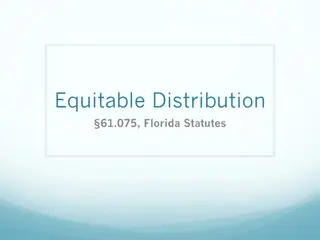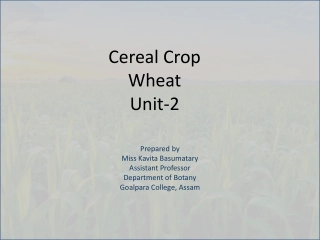Insights into Portulaca oleracea: Distribution, Description, and Historical Uses
Portulaca oleracea, commonly known as Purslane, is an annual succulent plant in the Portulacaceae family with widespread distribution in the Old World. It is valued for its resilience, nutritional content, and historical significance as a cultivated crop and medicinal herb. The plant's features, uses by animals and humans, and its presence in archaeological findings showcase its ecological and cultural importance.
Download Presentation

Please find below an Image/Link to download the presentation.
The content on the website is provided AS IS for your information and personal use only. It may not be sold, licensed, or shared on other websites without obtaining consent from the author. Download presentation by click this link. If you encounter any issues during the download, it is possible that the publisher has removed the file from their server.
E N D
Presentation Transcript
Portulacaceae Family Portulaca oleracea L. Purslane
Pastures are preferred by animals especially during dry periods. Most sheep graze. Seeds are a favorite feed for birds. The flowers are a good honey extract source for bees. Seeds are consumed by roasting in some countries or mixed in bread flour. This plant contains plenty of oxalic acid and nitrate. Some diseases may be seen if consumed by animals too much.
Portulaca oleracea (common purslane, also known as verdolaga, red root, or pursley) is an annual succulent in the family Portulacaceae, which may reach 40 cm (16 in) in height. Approximately forty cultivars are currently grown.
Distribution It has an extensive distribution, assumed to be mostly anthropogenic, throughout the Old World extending from North Africa and Southern Europe through the Middle East and the Indian subcontinent to Malesia and Australasia. The species status in the New World is uncertain: in general, it is often considered an exotic weed, however, there is evidence that the species was in Crawford Lake deposits (Ontario) in 1350 1539, suggesting that it reached North America in the pre-Columbian era. Scientists suggested that the plant was already eaten by native Americans, who spread its seeds. How it reached the New World is currently unknown.
Description It has smooth, reddish, mostly prostrate stems and the leaves, which may be alternate or opposite, are clustered at stem joints and ends. The yellow flowers have five regular parts and are up to 6 mm (0.24 in) wide. Depending upon rainfall, the flowers appear at any time during the year. The flowers open singly at the center of the leaf cluster for only a few hours on sunny mornings. Seeds are formed in a tiny pod, which opens when the seeds are mature. Purslane has a taproot with fibrous secondary roots and is able to tolerate poor compacted soils and drought.
Widely used in East Mediterranean countries, archaeobotanical finds are common at many prehistoric sites. In historic contexts, seeds have been retrieved from a protogeometric layer in Kastanas, as well as from the Samian Heraion dating to seventh century BC. In the fourth century BC, Theophrastus names purslane, andr khne, as one of the several summer pot herbs that must be sown in April (Enquiry into Plants 7.1.2). As Portulaca it figures in the long list of comestibles enjoyed by the Milanese given by Bonvesin de la Riva in his "Marvels of Milan" (1288). In antiquity, its healing properties were thought so reliable that Pliny the Elder advised wearing the plant as an amulet to expel all evil (Natural History 20.210).
Uses Fresh culinary purslane Greek salad with purslane Purslane, raw Nutritional value per 100 g (3.5 oz) Energy 84 kJ (20 kcal) Carbohydrates 3.39 g Fat 0.36 g Protein 2.03 g Vitamins Quantity %DV VitaminA Thiamine (B1) Riboflavin (B2) Niacin (B3) Vitamin B6 Folate (B9) Vitamin C 25% 21 mg Vitamin E 81% 12.2 mg Minerals Quantity %DV Calcium 7% 65 mg Iron 15% 1.99 mg Magnesium Manganese Phosphorus Potassium11% 494 mg Zinc 2% 0.17 mg Other constituents Water 92.86 g Link to USDA Database entry Units g = micrograms mg = milligrams IU = International units Percentages are roughly approximated using US recommendations for adults. Source: USDA Nutrient Database 1320 IU 4% 0.047 mg 9% 0.112 mg 3% 0.48 mg 6% 0.073 mg 3% 12 g 19% 68 mg 14% 0.303 mg 6% 44 mg Quantity
Purslane may be eaten as a leaf vegetable. William Cobbett noted that it was "eaten by Frenchmen and pigs when they can get nothing else. Both use it in salad, that is to say, raw". It has a slightly sour and salty taste and is eaten throughout much of Europe, the Middle East, Asia, and Mexico. The stems, leaves and flower buds are all edible. Purslane may be used fresh as a salad, stir-fried, or cooked as spinach is, and because of its mucilaginous quality it also is suitable for soups and stews. The sour taste is due to oxalic and malic acid, the latter of which is produced through the crassulacean acid metabolism (CAM) pathway that is seen in many xerophytes (plants living in dry conditions), and is at its highest when the plant is harvested in the early morning.
Australian Aborigines use the seeds of purslane to make seedcakes. Greeks, who call it andr kla or glistr da, use the leaves and the stems with feta cheese, tomato, onion, garlic, oregano, and olive oil. They add it in salads, boil it, or add it to casseroled chicken. In Turkey, besides being used in salads and in baked pastries, it is cooked as a vegetable similar to spinach, or is mixed with yogurt to form a Tzatziki variant.
Companion plant As a companion plant, purslane provides ground cover to create a humid microclimate for nearby plants, stabilising ground moisture. Its deep roots bring up moisture and nutrients that those plants can use, and some, including corn, will follow purslane roots down through harder soil that they cannot penetrate on their own.
Nutrition Purslane contains more omega-3 fatty acids (alpha-linolenic acid in particular than any other leafy vegetable. Studies have found that purslane has 0.01 mg/g of eicosapentaenoic acid (EPA). It also contains vitamins (mainly vitamin A, vitamin C, vitamin E (alpha-tocopherol), vitamin B, carotenoids), and dietary minerals such as magnesium, calcium, potassium, and iron.
Also present are two types of betalain alkaloid pigments, the reddish betacyanins (visible in the coloration of the stems) and the yellow betaxanthins (noticeable in the flowers and in the slight yellowish cast of the leaves). Both of these pigment types are potent antioxidants and have been found to have antimutagenic properties in laboratory studies.
Cooked vs. raw 100 grams of fresh purslane leaves contain 300 to 400 mg of alpha-linolenic acid. One cup (250 ml) of cooked leaves contains 90 mg of calcium, 561 mg of potassium, and more than 2,000 IUs of vitamin A.
Morning harvest vs. afternoon When water is abundant, purslane performs photosynthesis mostly by C3 carbon fixation, which is more widespread in nature. When stressed by low availability of water, however, purslane, which has evolved in hot and dry environments, switches to photosynthesis using an alternative pathway, crassulacean acid metabolism (the CAM pathway). At night its leaves trap carbon dioxide, which is converted into malic acid (which is the souring principle of apples), and, in the day, the malic acid is converted into glucose. When harvested in the early morning, the leaves have ten times the malic acid content as when harvested in the late afternoon, and thus have a significantly more tangy taste. Opuntia cacti, which are eaten as a vegetable (known as nopales in Mexican cuisine), also employ the CAM pathway and are similarly best harvested in the late afternoon, though the pickled nopales sold commercially have citric or malic acids added to the pickling liquid.
Chemical constituents Chemical constituents include noradrenaline, calcium salts, dopamine, L-DOPA, malic acid, citric acid, glutamic acid, asparagic acid, nicotinic acid, alanine, glucose, fructose, and sucrose. Purslane also contains oxalic acid that makes it non- recommended in large quantities for people who have uric acid or kidney problems or must restrict dietary oxalate levels. Betacyanins isolated from Portulaca oleracea improved cognition deficits in aged mice. A subclass of homoisoflavonoids from the plant showed in vitro cytotoxic activities towards four human cancer cell lines.
In popular culture Purslane also finds mention in a translation of the Bible as a repulsive food. Job's question in Job 6:6 is translated in the Revised Standard Version as, "Can that which is tasteless be eaten without salt or is there any taste in the slime of the purslane?" whereas the King James Version translates this verse as "Can that which is unsavoury be eaten without salt? Or is there any taste in the white of an egg? The name verdolaga, associated with the plant that grows in South America, is a nickname for football clubs with green-white schemes in their uniforms, such as Colombia's Atletico Nacional and Argentina's Ferrocarril Oeste.
Purslane grows in full sun in almost any soil, from muck high in organic matter to heavy clay. It does best in warm weather, and young plants will remain small and stunted when conditions are cool. Although it prefers regular water it can tolerate drought. It is easily dug or hoed out where unwanted, but these plants should be removed from the garden as cut stems from larger plants will root readily at the nodes to become re- established, and seeds will mature in the pods even if the plant is pulled and left with its roots turned upward. Seeds can remain viable in the soil for several decades. The plant is frost tender, and will be killed by the first freeze in fall.
Purslane is easily grown in the vegetable garden from seed, ready for harvest in 6-8 weeks. Sow in fertile, well-drained soil and thin to 4 to 6 apart. The entire plant can be harvested, or the stems can be cut back to within two inches of the crown and the plant will regrow, providing edible leaves for most of the summer (although successive sowings may be preferred for more tender young leaves). When grown as a food crop, water regularly as moisture- stressed leaves are not as palatable as those from well- watered plants. Purslane has few pests, although in some parts of the country purslane sawfly, Schizocerella pilicornis, and a leafminer weevil, Hypurus bertrandiperris, will damage or kill the plants.

















































